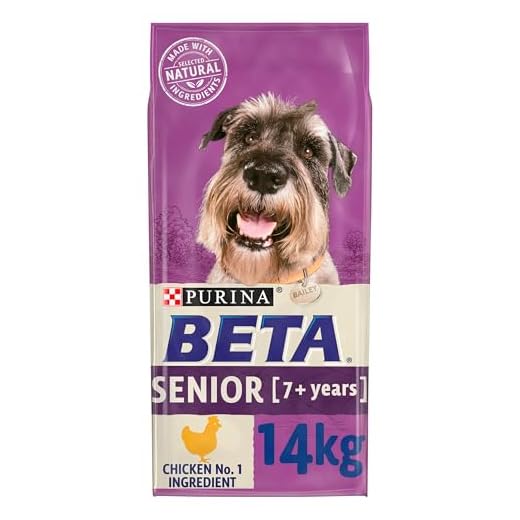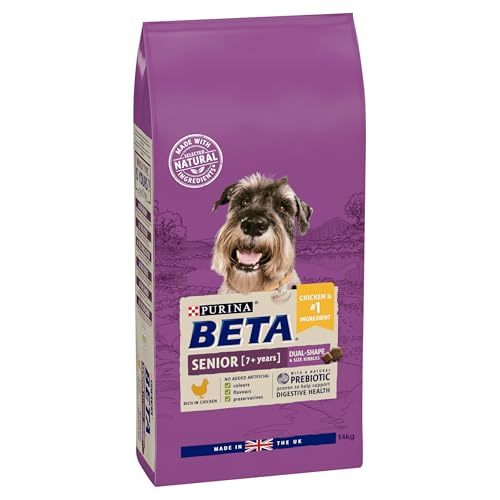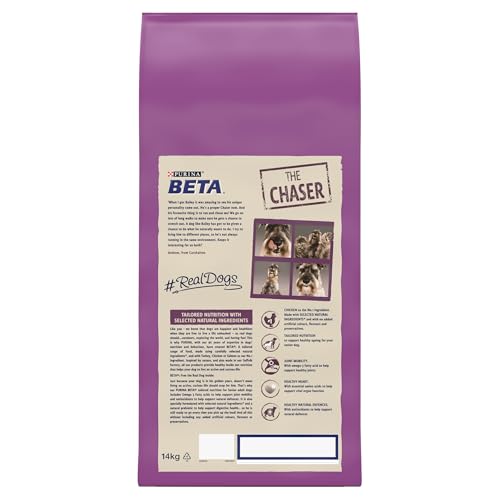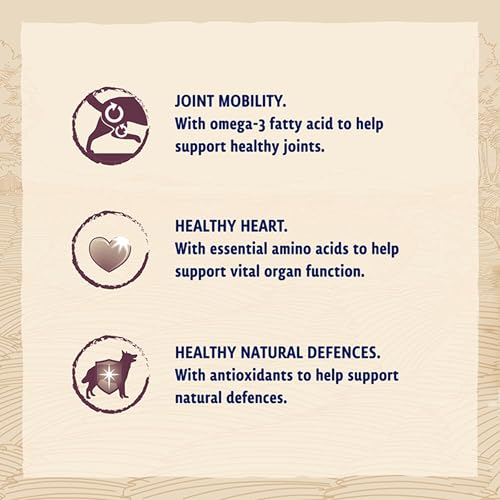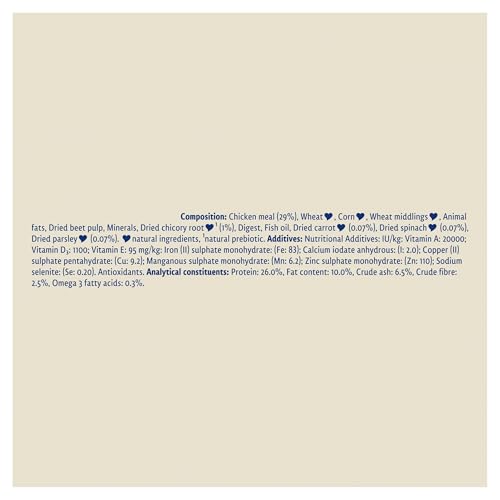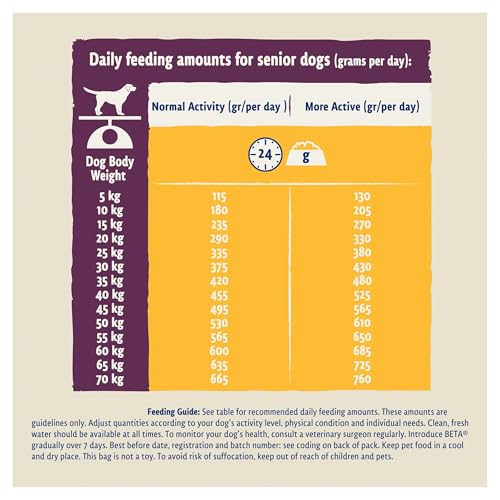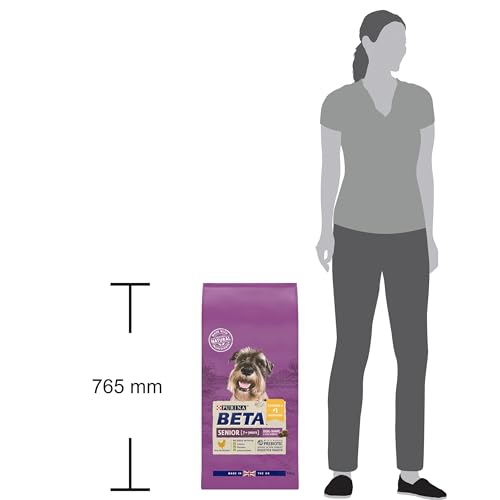




When it comes to ensuring the health and happiness of our furry friends, choosing the right diet is crucial. After extensive research and experimentation, I’ve discovered a chicken and rice recipe that not only meets my dog’s nutritional needs but also delights his taste buds. This recipe has become a staple in our household, providing a balanced meal that’s easy to prepare and cost-effective.
In the quest to find the best homemade dog food, I realised the importance of using high-quality, wholesome ingredients. Commercial dog foods often contain fillers, artificial preservatives, and questionable meat sources. By making my dog’s food at home, I have full control over what goes into his bowl. The combination of chicken and rice is not only gentle on the digestive system but also packed with essential nutrients.
Through this article, I aim to share the detailed steps and benefits of this chicken and rice dog food recipe. Whether your dog has a sensitive stomach, is recovering from an illness, or you simply want to provide the best for your canine companion, this recipe is a perfect choice. Let’s dive into the ingredients and preparation methods that make this dish a favourite for dogs of all sizes and breeds.
Why Chicken and Rice is Ideal for Dogs
As a pet owner, I’ve always been concerned about providing the best nutrition for my dog. Through extensive research and personal experience, I’ve found that a diet based on chicken and rice can be incredibly beneficial for dogs. This combination offers a balanced mix of protein and carbohydrates that supports overall health and well-being.
Chicken, being a lean meat, is an excellent source of high-quality protein. It helps in building and maintaining strong muscles, and it’s also easily digestible, making it perfect for dogs with sensitive stomachs. Rice, on the other hand, provides essential carbohydrates that supply the energy dogs need for their daily activities. Together, chicken and rice form a balanced meal that is both nutritious and easy on the digestive system.
Key Benefits of Chicken and Rice
- Digestive Health: Both chicken and rice are known for their mildness, making them ideal for dogs with digestive issues. They are less likely to cause stomach upset compared to other foods.
- Balanced Nutrition: This combination ensures a balanced intake of protein and carbohydrates, essential for maintaining energy levels and muscle health.
- Allergy-Friendly: Chicken and rice are less likely to trigger food allergies in dogs. This makes them a safe choice for dogs with food sensitivities.
- Palatability: Most dogs find chicken and rice very tasty, which is crucial for maintaining a consistent diet, especially for picky eaters.
Another advantage of feeding dogs chicken and rice is the simplicity and control it offers. When you prepare these meals at home, you know exactly what ingredients are being used, which helps in avoiding harmful additives and preservatives often found in commercial dog foods.
In conclusion, a diet comprising chicken and rice can be incredibly beneficial for dogs, providing them with the essential nutrients they need while being gentle on their digestive system. It’s a reliable choice that many pet owners, including myself, have found to support our furry friends’ health and happiness effectively.
Benefits of Homemade Dog Food
When I decided to start making my own dog food, I quickly realised there are numerous advantages to this approach. Preparing meals for my furry friend at home gives me complete control over what goes into their diet. This means I can choose high-quality, fresh ingredients and avoid harmful additives, preservatives, and fillers often found in commercial dog food.
Another significant benefit is the ability to tailor the diet to meet my dog’s specific health needs. Whether it’s addressing allergies, weight management, or special dietary requirements, homemade dog food allows me to customise meals to ensure my pet receives optimal nutrition and enjoys their meals.
Key Advantages of Homemade Dog Food
- Quality Control: By selecting fresh, natural ingredients, I ensure that my dog consumes food that supports their overall health and well-being. This can lead to better coat condition, increased energy levels, and improved digestion.
- Personalisation: Homemade meals can be tailored to address specific health issues. For example, if my dog has a sensitivity to certain grains or proteins, I can easily adjust the recipe to exclude those items.
- Bonding Experience: Preparing food for my dog can also be a rewarding bonding experience. It gives me a chance to show love and care, which strengthens our relationship.
- Cost-Effective: While some premium commercial dog foods can be quite expensive, making food at home can be more economical in the long run. I can buy ingredients in bulk and make large batches to save money.
- Peace of Mind: Knowing exactly what my dog is eating gives me peace of mind. There are no hidden ingredients or surprises, and I can trust that I’m providing a balanced diet that supports their health.
In conclusion, making homemade dog food offers numerous benefits that contribute to the health and happiness of my pet. It’s a commitment, but one that pays off in the form of a healthier, happier dog and a closer bond between us. If you’re considering this route, it’s important to research and consult with a veterinarian to ensure that you’re meeting all of your dog’s nutritional needs.
Essential Ingredients for Homemade Chicken and Rice Dog Food
When preparing a nutritious meal for your dog, it’s vital to ensure you’re including ingredients that promote overall health and well-being. Making chicken and rice dog food at home allows you to control what your pet eats, avoiding unnecessary additives and preservatives found in commercial products.
In this guide, I will share the essential components that should be part of any chicken and rice dog food recipe. Each ingredient is selected for its nutritional benefits, ensuring your furry friend gets a balanced and delicious meal.
Key Ingredients
- Chicken: The primary protein source, chicken provides essential amino acids for muscle development and energy. Use boneless, skinless chicken breasts or thighs, ensuring all bones are removed to prevent choking hazards.
- Rice: A digestible carbohydrate, rice is gentle on the stomach and provides a steady source of energy. White rice is often preferred for its ease of digestion, but brown rice can be used for added fibre if your dog tolerates it well.
- Vegetables: Adding vegetables like carrots, peas, and spinach introduces essential vitamins and minerals. These veggies are rich in antioxidants and help support your dog’s immune system.
- Oils and Fats: Incorporating healthy fats such as fish oil or olive oil is crucial for a shiny coat and healthy skin. Omega-3 and Omega-6 fatty acids play a vital role in overall health.
- Calcium: Ground eggshells or calcium supplements ensure your dog receives adequate calcium for bone health. This is particularly important if you’re preparing homemade food regularly.
- Supplemental Nutrients: Adding a multivitamin supplement can help fill any nutritional gaps, ensuring your dog receives a comprehensive range of nutrients.
By including these ingredients, you can create a balanced and nourishing meal for your dog. Remember, it’s always wise to consult with your veterinarian before making significant changes to your pet’s diet, especially if they have specific health conditions or dietary requirements.
Step-by-Step Guide to Preparing Nutritious Chicken and Rice for Your Dog
Preparing homemade meals for my dog is a rewarding experience that ensures he gets the best nutrition. One of my favourite recipes is a simple yet nutritious chicken and rice dish. Not only is it easy to prepare, but it’s also gentle on my dog’s stomach and packed with essential nutrients.
In this guide, I’ll walk you through each step to create this wholesome meal for your furry friend. By following these instructions, you’ll be able to provide a balanced diet that supports your dog’s health and wellbeing.
Ingredients You’ll Need
- 2 boneless, skinless chicken breasts – Rich in protein, which is essential for muscle development.
- 1 cup of white rice – A great source of energy and easy to digest.
- 1/2 cup of mixed vegetables (carrots, peas, and green beans) – These add vitamins and minerals.
- 3 cups of water – For cooking the rice and chicken.
Instructions
- Preparing the Chicken: Begin by trimming any excess fat from the chicken breasts. Place them in a pot and cover with water. Bring the water to a boil, then reduce to a simmer. Cook for about 15-20 minutes, or until the chicken is fully cooked through.
- Cooking the Rice: While the chicken is cooking, rinse the rice under cold water. In a separate pot, bring 2 cups of water to a boil. Add the rice, reduce the heat, cover, and let it simmer for about 15 minutes or until the water is absorbed and the rice is tender.
- Preparing the Vegetables: If you’re using fresh vegetables, chop them into small, bite-sized pieces. If you’re using frozen vegetables, ensure they are thoroughly defrosted. Steam the vegetables until they are soft and easy to mash.
- Combining Ingredients: Once the chicken is cooked, remove it from the pot and shred it into small pieces. Mix the shredded chicken, cooked rice, and vegetables in a large bowl. Ensure the mixture is well combined.
- Serving: Allow the mixture to cool to room temperature before serving it to your dog. Portion the food according to your dog’s size and dietary needs.
This homemade chicken and rice meal can be stored in the refrigerator for up to three days. Make sure to reheat it to a safe temperature and let it cool before serving each time. With this simple recipe, you can ensure your dog enjoys a healthy, balanced diet made with love.
Proper Storage and Serving of Homemade Dog Food
Creating homemade dog food, especially a nutritious chicken and rice mix, is a wonderful way to ensure your pet is getting the best possible nutrition. However, to maintain the quality and safety of the food, it’s crucial to store and serve it correctly. Here’s how I handle the process to keep my dog’s meals fresh and healthy.
First and foremost, I let the freshly cooked food cool completely before storing it. This prevents condensation, which can lead to spoilage. I use airtight containers to store the food, which helps to maintain its freshness and prevent contamination. I prefer glass containers for their non-porous nature, but high-quality plastic containers work well too. When it comes to portioning, I divide the food into daily servings to make it easy to grab and serve.
Storing Homemade Dog Food
- Refrigeration: Once the food is portioned, I place the containers in the fridge. Homemade dog food typically lasts about 3 to 5 days in the refrigerator. Labelling each container with the date it was made helps keep track of its freshness.
- Freezing: For longer storage, I freeze the portions. Using freezer-safe containers or bags, I can keep the food fresh for up to three months. To serve, I simply thaw a portion in the refrigerator overnight.
- Avoiding Waste: By freezing smaller portions, I reduce the risk of thawing more food than my dog can eat in a couple of days, minimising waste.
Serving Homemade Dog Food
- Thawing: When it’s time to serve, I ensure any frozen food is fully thawed in the fridge. I avoid microwaving, as it can create hot spots and potentially degrade some nutrients.
- Serving Temperature: I serve the food at room temperature. If it’s too cold, I warm it slightly by placing the container in a bowl of warm water for a few minutes.
- Supplementation: Sometimes, I add supplements like fish oil or vitamins as recommended by my vet, ensuring a well-rounded diet for my dog.
By following these steps, I ensure that the homemade dog food I prepare remains fresh, nutritious, and safe for my furry friend. Proper storage and serving techniques are essential in maintaining the quality of the meals I lovingly prepare.
Common Mistakes to Avoid When Making Dog Food
Preparing homemade meals for your dog can be a rewarding experience, but it requires careful attention to detail. When I first started making dog food, I made several errors that could have been easily avoided with a bit more knowledge. Over time, I learned from these mistakes and now I want to share them so you can avoid the same pitfalls.
One of the most important aspects of making dog food is ensuring that it is nutritionally balanced. It’s not just about combining ingredients that dogs typically enjoy, like chicken and rice, but also about providing the right vitamins, minerals, and nutrients that they need to stay healthy. Below, I outline some common mistakes that people often make when preparing dog food at home and how to avoid them.
Key Errors to Watch Out For
-
Ignoring Nutritional Balance: One of the biggest mistakes is not balancing the diet properly. Dogs need a mix of proteins, fats, carbohydrates, vitamins, and minerals. Simply feeding them chicken and rice, for instance, can lead to deficiencies. Consulting with a vet or a pet nutritionist can help in creating a well-rounded diet.
-
Using Harmful Ingredients: Some foods that are safe for humans can be toxic to dogs. Ingredients like onions, garlic, chocolate, and grapes should be strictly avoided. Always double-check before adding new items to your dog’s meals.
Must-HaveLily's Kitchen Natural Dog Food 12kgGrain-free recipe with chicken and duckCrafted from natural ingredients, this complete dog food supports your pet's digestive health with prebiotics and high-quality protein sources, ensuring a nutritious diet for happy, thriving dogs. -
Improper Portion Sizes: It’s easy to either overfeed or underfeed your dog. Both can lead to health issues such as obesity or malnutrition. Use a portion calculator based on your dog’s weight, age, and activity level to determine the right amount.
-
Lack of Variety: Feeding the same meal every day can lead to nutrient imbalances and boredom. Dogs, like humans, benefit from a varied diet. Rotate different protein sources and vegetables to ensure they get a wide range of nutrients.
-
Cooking Methods: Overcooking or using unhealthy cooking methods can destroy essential nutrients. Steaming or boiling ingredients preserves most of the nutrients compared to frying or overbaking.
By being mindful of these common errors, you can improve the quality of the food you prepare for your furry friend. Each meal should be an opportunity to support their health and well-being. Take the time to educate yourself on proper dog nutrition and consult professionals when needed. Your dog will thank you with their health and happiness.
Customising the Recipe for Your Dog’s Needs
When it comes to preparing chicken and rice for your furry friend, it’s important to understand that not all dogs have the same dietary needs. Tailoring the recipe to suit your dog’s specific health requirements and preferences can make a significant difference in their overall well-being. This is especially crucial if your dog has allergies, sensitivities, or specific nutritional deficiencies.
I have found that personalising the chicken and rice recipe involves more than just adjusting quantities. It’s about selecting the right ingredients and adding supplements that can boost your dog’s health. Let me share some ways you can customise this meal to meet your dog’s unique needs.
Adjusting Ingredients for Optimal Nutrition
Protein Sources: While chicken is a great lean protein, some dogs might benefit from other protein sources. If your dog is allergic to chicken, consider using turkey, fish, or lean beef. These alternatives provide similar nutritional benefits without triggering allergies.
Carbohydrate Choices: Although rice is a common carbohydrate, it may not be suitable for all dogs. Brown rice is a healthier option due to its higher fibre content. For dogs with grain sensitivities, consider sweet potatoes or quinoa as substitutes.
Vegetable Additions: Adding vegetables can enhance the nutritional profile of the meal. Carrots, peas, and spinach are excellent choices. They provide essential vitamins and minerals that support your dog’s immune system and overall health.
Incorporating Supplements
To ensure your dog is getting a balanced diet, you might need to incorporate supplements:
- Omega-3 Fatty Acids: Adding fish oil can improve your dog’s coat and skin health.
- Probiotics: These support digestive health, which is particularly beneficial for dogs with sensitive stomachs.
- Calcium: If you’re not using bone-in meat, a calcium supplement ensures your dog gets enough of this vital mineral.
Monitoring and Adjusting Portions
Each dog is unique in terms of metabolism and activity level. It’s essential to monitor your dog’s weight and energy levels and adjust the portions accordingly. A more active dog will require a higher caloric intake compared to a less active or older dog.
- Weigh Your Dog Regularly: This helps you track any weight changes and adjust food portions to avoid underfeeding or overfeeding.
- Consult Your Veterinarian: Regular check-ups with your vet can provide valuable insights into your dog’s nutritional needs and any adjustments that may be necessary.
Customising your dog’s chicken and rice recipe is an ongoing process that involves careful observation and adjustments. By paying attention to your dog’s reactions and needs, you can ensure they enjoy a nutritious and balanced diet that supports their health and happiness.
How Often Should You Feed Your Dog Chicken and Rice?
When it comes to feeding your dog a chicken and rice diet, it’s important to consider the frequency and portion sizes that best suit your dog’s needs. This combination is often recommended for dogs with digestive issues, as it is easy to digest and gentle on their stomachs. However, determining how often to feed this meal depends on several factors, including the dog’s age, size, and overall health condition.
For adult dogs, a chicken and rice diet can be incorporated into their meals once or twice a day. If your dog is experiencing gastrointestinal problems, feeding smaller, more frequent meals can be beneficial. This approach helps to manage their digestion better and ensures they are receiving enough nutrients without overwhelming their system.
Feeding Schedule and Considerations
Puppies: Younger dogs have different nutritional requirements compared to adults. Puppies typically need to eat more frequently, often three to four times a day. When feeding a puppy chicken and rice, it’s crucial to balance this with their regular puppy food to ensure they receive all the necessary nutrients for growth.
Adult Dogs: For a healthy adult dog, incorporating chicken and rice into their diet can be done once or twice a week as a treat or part of their regular feeding schedule. If the chicken and rice are part of a temporary diet due to illness, small portions given two to three times a day can help with their recovery.
Seniors: Older dogs may benefit from more frequent, smaller meals throughout the day, especially if they have specific health issues. Feeding chicken and rice in smaller portions two to three times daily can help manage their digestion and maintain their energy levels.
- Portion Sizes: Adjust the portion sizes based on your dog’s weight and activity level. A general guideline is to provide about ¼ to ⅓ cup of chicken and rice per 10 pounds of body weight per meal.
- Consult Your Vet: Always consult with your veterinarian before making any significant changes to your dog’s diet, particularly if they have underlying health conditions or specific dietary needs.
- Observe and Adjust: Monitor your dog’s response to the chicken and rice diet. If they show signs of improved health and digestion, you can continue with the schedule. Adjust portions and frequency as needed based on their condition and vet recommendations.
Weighing Up Homemade vs. Commercial Dog Food
Choosing the right food for your dog can be a challenging decision. As a pet owner, I’ve often found myself torn between preparing meals at home and opting for pre-packaged dog food. Each option has its own set of benefits and drawbacks that are worth considering.
Homemade dog food allows me to have complete control over the ingredients that go into my pet’s meals. I can ensure that only high-quality, fresh ingredients are used, which is particularly important if my dog has specific dietary needs or allergies. Preparing food at home also enables me to avoid preservatives and artificial additives commonly found in commercial products.
Benefits and Drawbacks of Homemade Dog Food
- Quality Control: I know exactly what my dog is eating and can choose organic or natural ingredients.
- Customization: Recipes can be tailored to meet the specific nutritional needs of my dog, adjusting for age, health conditions, and preferences.
- Time-Consuming: Preparing homemade meals requires significant time and effort, from sourcing ingredients to cooking and portioning.
- Nutritional Balance: Ensuring a well-balanced diet requires careful planning and potentially consulting a vet or pet nutritionist.
Advantages and Limitations of Commercial Dog Food
- Convenience: Pre-packaged dog food is quick and easy to serve, saving time and effort in meal preparation.
- Consistency: Each bag or can contains a balanced mix of nutrients, formulated to meet standard nutritional guidelines for dogs.
- Variety: There is a wide range of products available to suit different dietary needs, preferences, and budgets.
- Quality Concerns: Some commercial foods contain fillers, preservatives, and artificial additives that might not be ideal for my dog’s health.
In conclusion, both homemade and store-bought dog food come with their own set of pros and cons. Homemade dog food offers greater control over ingredients and customization but demands more time and careful planning. On the other hand, commercial dog food provides convenience and consistency but might include less desirable ingredients. Ultimately, the best choice depends on my dog’s specific needs and my personal circumstances, including the time and resources I can dedicate to my pet’s diet.
Frequently Asked Questions About Chicken and Rice Dog Food
Chicken and rice dog food is a popular choice among pet owners for its simplicity and nutritional benefits. However, there are often many questions regarding its preparation, benefits, and suitability for different dogs.
In this section, we will address some of the most frequently asked questions about chicken and rice dog food to help you make an informed decision for your furry friend.
FAQs
- Can all dogs eat chicken and rice?
While chicken and rice are generally safe for most dogs, some may have allergies or sensitivities. Always consult your vet before making any dietary changes.
- How do I prepare chicken and rice for my dog?
Boil boneless, skinless chicken breasts and plain white rice separately. Mix them in a ratio of one part chicken to two parts rice. Do not add any seasonings or spices.
- How long can I feed my dog chicken and rice?
Chicken and rice can be used as a temporary diet for up to a week. For long-term feeding, ensure it is nutritionally balanced with other ingredients or supplements.
- What if my dog has a sensitive stomach?
Chicken and rice are often recommended for dogs with sensitive stomachs due to their blandness. However, monitor your dog for any adverse reactions.
- Can I freeze chicken and rice dog food?
Yes, you can freeze portions of chicken and rice dog food. Ensure it is stored in airtight containers and thaw it thoroughly before serving.
Conclusion
Chicken and rice dog food can be a nutritious and easy-to-prepare option for many dogs, especially those with digestive issues or allergies. By understanding the preparation methods and addressing common concerns, you can ensure that your dog enjoys a healthy and balanced diet.
Always remember to consult with your veterinarian before introducing any new food into your dog’s diet, and observe your pet closely for any changes in their health or behaviour.
Best Chicken And Rice Dog Food Recipe
Features
| Is Adult Product | |
| Release Date | 2025-05-17T00:00:01Z |
| Language | English |
| Number Of Pages | 213 |
| Publication Date | 2025-05-17T00:00:01Z |
Features
| Part Number | HARRLR-18 |
| Model | HARRLR-18 |
| Color | Lamb |
| Release Date | 2019-10-17T00:00:01Z |
| Size | 18 kg (Pack of 1) |
| Price history for Harringtons Natural Dry Dog Food 18kg | |
|---|---|
|
Latest updates:
|
|
Features
| Part Number | HARRGFSC-12 |
| Model | HARRGFSC-12 |
| Release Date | 2024-01-01T00:00:01Z |
| Size | 12 kg (Pack of 1) |
| Price history for Harringtons Grain Free Dog Food with Superfoods | |
|---|---|
|
Latest updates:
|
|
Features
| Part Number | 370+1040 |
| Model | 370+1040 |
| Color | # Gray |
| Size | 20 Pieces |
Features
| Part Number | DDCKG12 |
| Model | DDCKG12 |
| Color | Chicken and Duck |
| Size | 12 kg (Pack of 1) |
| Language | English |
| Price history for Lily's Kitchen Natural Dog Food 12kg | |
|---|---|
|
Latest updates:
|
|
Features
| Part Number | Muscle |
| Model | Muscle-300 |
| Color | purple |
| Size | Large - 60 Servings |
| Energy Efficiency Class | A |
Features
| Part Number | 12231689 |
| Model | 12531980 |
| Color | transparent |
| Release Date | 2014-05-23T00:00:01Z |
| Size | 1 count (Pack of 1) |
Features
| Part Number | 180933/3054 |
| Model | 180933/3054 |
| Color | Organic Chicken and Vegetable |
| Size | 7 kg (Pack of 1) |
| Language | English |
Q&A:
What are the benefits of feeding my dog chicken and rice dog food?
Chicken and rice dog food is often gentle on the stomach, easily digestible, and provides a balanced source of protein and carbohydrates for your dog’s energy needs.
How can I make a homemade chicken and rice dog food?
To make homemade chicken and rice dog food, cook chicken thoroughly, shred it, and then combine it with cooked rice. You can also add in some vegetables like carrots or peas for added nutrients.
Is chicken and rice dog food suitable for dogs with sensitive stomachs?
Yes, chicken and rice dog food is often recommended for dogs with sensitive stomachs as it is bland, easy to digest, and unlikely to cause gastrointestinal upset.
Can I use brown rice instead of white rice in chicken and rice dog food?
Yes, you can substitute brown rice for white rice in chicken and rice dog food. Brown rice offers more fiber and nutrients compared to white rice, which can be beneficial for your dog’s overall health.
How often should I feed my dog chicken and rice dog food?
Chicken and rice dog food can be fed to your dog as a temporary diet during periods of stomach upset or as a part of their regular meal rotation. It’s best to consult with your vet to determine the appropriate feeding frequency for your dog’s specific needs.



